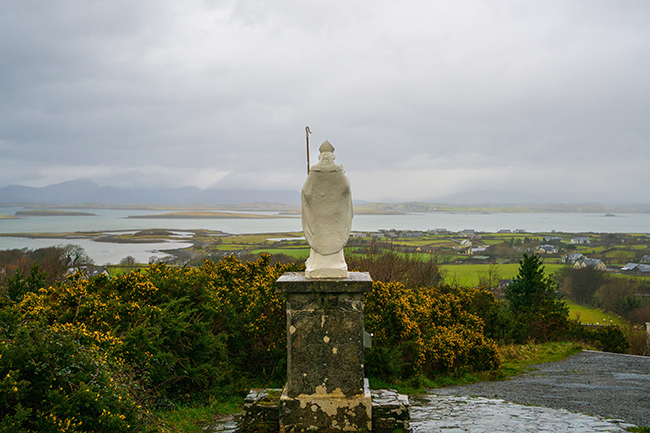“But, whether I will it or not, save me, O Lord. For to save a good man is no great thing, and to have mercy on the pure is nothing wonderful, for they are worthy of Thy mercy. But show the wonder of Thy mercy on me, a sinner. In this reveal Thy love for men, lest my wickedness prevail over Thy unutterable goodness and mercy. And order my life as Thou wilt” (the prayer of St. John Damascene).
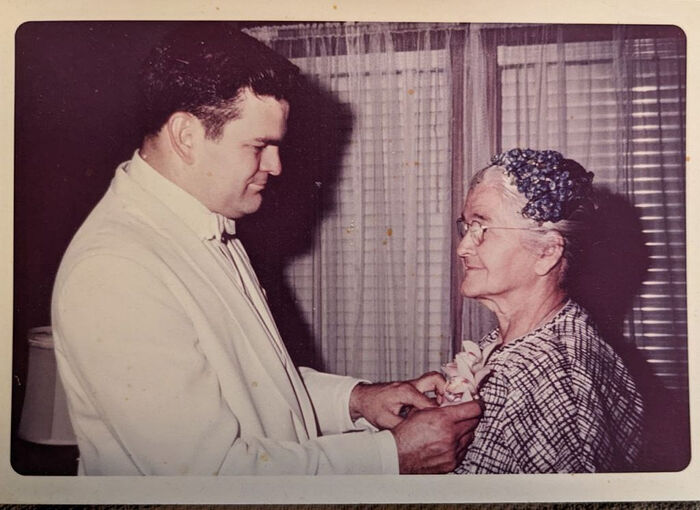 John’s father, Osip, with grandmother Pelagia
John’s father, Osip, with grandmother Pelagia
The word “America” is often used as a synonym for one of the nations in that part of the world, the United States of America, a country of immigrants and settlers. John Chrysostom was born on May 15, 1966 in the town of Rochester, New York to his mother Eugenia-Agnes Harrigen and father Osip Stashko. His paternal grandparents, grandmother Pelagia and grandfather Ivan, were Uniates who moved to America from Galicia (a historical region in western Ukraine) in the Russian Empire. His maternal ancestors were Irish Catholics.
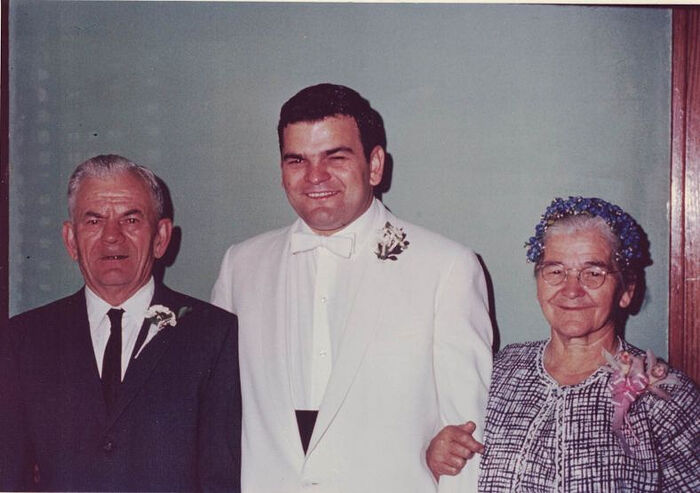 John’s father, Osip, with his parents, John and Pelagia
John’s father, Osip, with his parents, John and Pelagia
His mother graduated from the university in New York, and she also finished a course in theology. His father, upon earning a college degree, became a radio electronics technician and designer of radar systems for F-18 fighter jets. He spent his entire life working for military industrial complex-aligned companies. He earned a lot, investing in his family and his children’s education. Thanks to this, the children studied only in tuition-based Catholic schools, because in their family faith in God was the number-one priority. The parents absorbed the Christian principles of life with their mother’s milk and passed this on to their children.
His mother gave birth to seven children: the eldest son, Osip, sisters Eugenia, Julia, Christina, Irina-Elena, and the middle son John (the third child in the family). Herald, the youngest in the family, was born in 1975 when his mother was already forty-three years old. This was when abortions became legal in America, so she used to say that Herald was her personal protest against abortions.
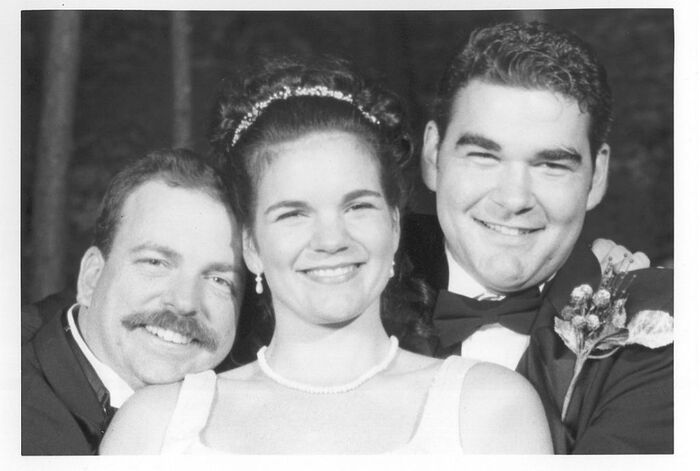 John with his brother Herald and sister Irina-Yelena
John with his brother Herald and sister Irina-Yelena
His parents agreed on the issue of choosing the name for their middle son. His father wanted to name him Ivan in honor of his brother who died in the battle with the Japanese in the Coral Sea in 1942, whereas his mother, inspired by the life of St. John Chrysostom, also wanted to name her son John, but with the addition of the name Chrysostom (“Golden Mouth” in Greek). As a result, their son was named John Chrysostom. Their family were regulars at the services in Catholic churches, but they also attended Uniate parishes whenever possible. This is where all their children were baptized, even if they had to travel a great distance of four hundred kilometers. John’s father Osip was especially fond of attending church services, and whenever he had the opportunity, he would have spent all his free time at church. His father sang very well and John especially remembered his rendition of the romance, “Dark Eyes.” The family enjoyed listening to gramophone records, and his father read books in Russian and Ukrainian.
When John turned two, his family moved to the city of Garland, Texas, and he was brought up at home until he turned six. John’s family knew the history of their ancestors well, and he heard stories about Russia and Ireland from his childhood.
John was born in the sixties of the twentieth century at the height of the Cold War, when the prevailing stereotypes about his father’s homeland were purely negative, so that Russia (the USSR at the time) was considered an evil empire and Russians the enemies of America. But as a seven-year-old boy, John had a great desire to go and live in Russia. because once he entered school, he was confronted by negativity from his peers for being different. His name, Chrysostom, and the last name Stashko were unlike the other children’s names. Even his features were unlike others and he crossed himself differently, as well. Other children even teased him because his English sounded odd to them. It often happens in American society that people feek oppressed because of their nationality, speech, faith, or culture. Thus, anywhere beyond his home, John was known as John. John knew deep in his heart that ALL Russians can’t be evil, for his grandparents and his ancestors once resided in Russia, a great country with a great past.
The family often had to move from state to state in search of jobs with bigger salaries to support the family, a typical and frequent occurrence in America. After moving through four states and four schools, at age twelve John entered St. Anselm’s Academy, a Catholic Grammar School for Boys located in Washington, D.C. on the grounds of a Benedictine monastery. The Academy had the children of diplomats as its students and it was quite hard to study there partly because he had difficulty studying Latin. After two years there, John switched to Archbishop John Carroll Catholic High School for boys, and, after graduating at the age of sixteen, he enrolled at the Catholic liberal arts university of Dallas that housed a Cistercian monastery and seminary. John, a technical-minded young man, wanted to be an engineer, but the University of Dallas offered nothing but studies in seven liberal sciences and arts (with a particular emphasis on the Catholic interpretation of philosophy, history, and art), so he chose to study at the Faculty of Physics. While studying there, John took up an intensive Russian language course. In his family, by the time the children grew up, everyone mostly spoke English and so their Russian language skills practically faded away. Fr. Placid, a Hungarian Cistercian priest who came to America in the 1950s, a polyglot who mastered twenty-three languages, helped him to learn his native language. In 1986, at the age of twenty, John earned a bachelor’s degree in Physics. He enrolled at the University of Rhode Island to study Physical Oceanography, but dropped out three months later because he wanted to learn about the world and his place in it. As a result, he enrolled with the U.S. Navy to work as a marine machinist for two years.
In 1989, he started earning his master’s degree at the University of New Mexico. When he successfully passed his exams and defended his thesis in Nuclear Physics, he became involved with the studies of the breaking of symmetry in delta-particle decay at TRIUMF (TRI University Meson Facility) in Canada.
In 1993 John received his Ph.D., and as a research intern at “NSCL” (National Superconducting Cyclotron Laboratory), he studied the physics of triaxial deformation of nuclei. He worked in Geneva on a similar project that led to the discovery of the Higgs boson. When the government shut down the SSC project (Superconducting Super Collider), many physicists in America became unemployed, so it was a challenge to find a postdoctoral position (work experience in the specialization for a PhD graduate that includes writing scientific articles).
In 1995, his father died of cancer. His death restored John’s faith in God and made it even stronger, because he felt strongly that his father remained close to him as if alive, despite the fact that man cannot defeat death here on earth. It was the same year when John found a job as an engineer at Ford Motor Company, where he designed laboratories for testing and improving cars. He was paid really well, but the work didn’t bring him satisfaction—his vast experience in theoretical physics did not match very well with the monotony of work in the automotive industry. In 1999, after going through several jobs as an engineer, John decided to make a radical change in his life and become a medical professional, not only to earn a living, but also to do good for people. Upon graduating from the Henry Ford Community College and earning his degree, he began working as a paramedic.
At the same time John contemplated becoming a monk, and he even spent some time in a monastery in France; but its traditions were out of accord with the principles of Christian life instilled in his childhood by his parents.
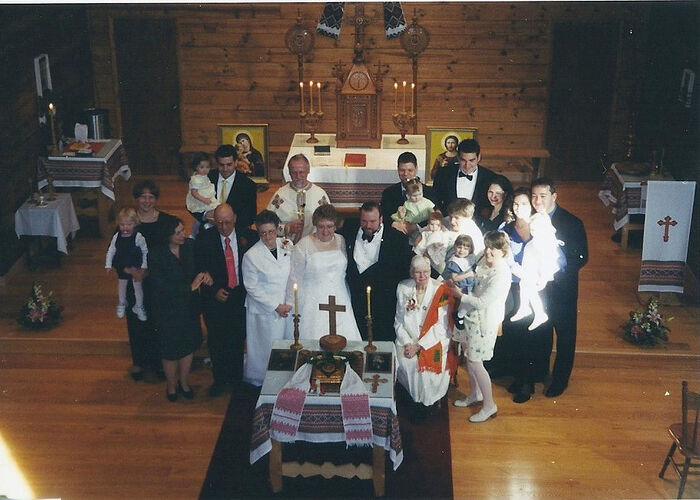
In 2002, John met his future wife Rebecca, who was originally from Colorado. Rebecca, a Catholic, had also lived in a convent for some time where she realized she wanted to start a family. In 2003, after deciding to become a doctor, John enrolled at Wayne State University. The young couple were married in a Uniate church in the suburbs of the capital Washington, where his cancer-stricken mother was living. They soon purchased a small apartment in Detroit, where John started medical school and his wife Rebecca enrolled in two departments at once—Slavic Languages and Literature, and Elementary Education. In their spare time, they attended church services together.
John joined the choir, but Rebecca, with her soprano, wasn’t chosen to sing there. When John’s mother passed away in the winter of 2005, the whole family gathered in Washington, DC. Just as after his father’s passing, John felt as if his mother was alive and close to him because of the light and peace emanating from her.
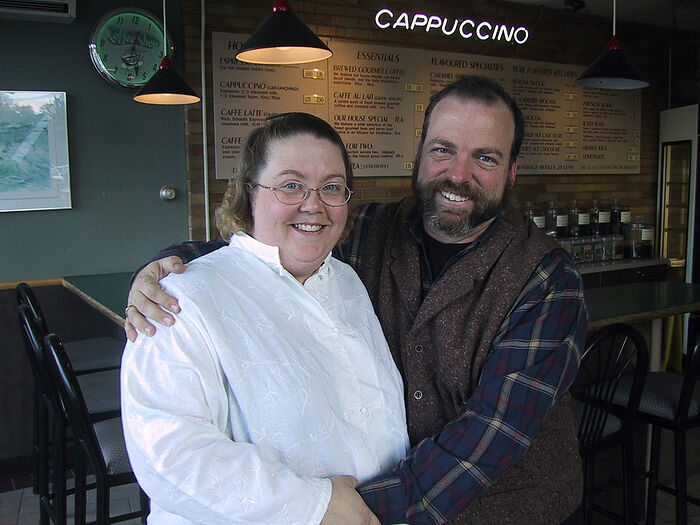
Feeling no spiritual unity in the Uniate church, John and Rebecca began to look for an Orthodox church where they would feel accepted. This was where they heard the news that the miracle-working  Numerous miraculous healings by Sitka Icon of the Mother of GodHundreds of faithful came out to every stop to attend the Divine services, hear His Grace’s presentation about the needs of the Alaskan clergy, and venerate the Sitka Icon.
Numerous miraculous healings by Sitka Icon of the Mother of GodHundreds of faithful came out to every stop to attend the Divine services, hear His Grace’s presentation about the needs of the Alaskan clergy, and venerate the Sitka Icon.
“>“Sitka” Icon of the Most Holy Mother of God had arrived from the town of Sitka, Alaska, the place of apostolic labors of  St. Innocent of Alaska and Moscow“>St. Innocent of Moscow (Veniaminov). Rebecca at the time was suffering from undetectable endometrial cancer (this diagnosis wouldn’t be known until 2011 following the loss of five pregnancies, with the one in the third trimester). She felt severe pain and thus was unable to become pregnant after more than two years of marriage. John decided to go to the church where the icon was supposed to be staying and it so happened that he greeted the icon of the Mother of God when it had just arrived at the church. He venerated the miracle-working icon even before it was brought inside, and prayed for his wife’s health. When he returned home, John learned that Rebecca was feeling much better and her symptoms had disappeared. A mere month later, their family was overjoyed to learn the wonderful news that they are expectant parents (their only surviving miracle baby). Sure enough, this incident of the Mother of God’s intercession made a profound impact on John’s soul.
St. Innocent of Alaska and Moscow“>St. Innocent of Moscow (Veniaminov). Rebecca at the time was suffering from undetectable endometrial cancer (this diagnosis wouldn’t be known until 2011 following the loss of five pregnancies, with the one in the third trimester). She felt severe pain and thus was unable to become pregnant after more than two years of marriage. John decided to go to the church where the icon was supposed to be staying and it so happened that he greeted the icon of the Mother of God when it had just arrived at the church. He venerated the miracle-working icon even before it was brought inside, and prayed for his wife’s health. When he returned home, John learned that Rebecca was feeling much better and her symptoms had disappeared. A mere month later, their family was overjoyed to learn the wonderful news that they are expectant parents (their only surviving miracle baby). Sure enough, this incident of the Mother of God’s intercession made a profound impact on John’s soul.
To be continued…

 Latvia: 20th anniversary of finding of relics of St. John of Riga celebratedSt. John was brutally tortured and finally shot and set on fire while still alive on the night of October 12, 1934.
Latvia: 20th anniversary of finding of relics of St. John of Riga celebratedSt. John was brutally tortured and finally shot and set on fire while still alive on the night of October 12, 1934.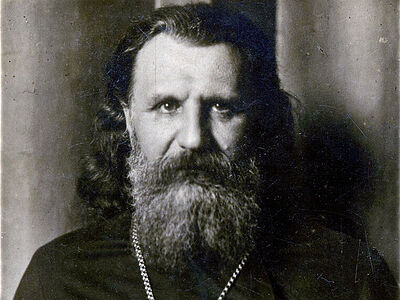 “I Will Be Even More Frightening for You Dead Than Alive!”On September 29/October 12 the Church honors the memory of the New Hieromartyr John (Pommer). It brings enormous joy to read his letters and sermons, to plunge into his radiant, fierce and mighty struggle while reading his scenes from his Life. But do we arm ourselves with the experience of our New Martyrs and Confessors? Do we pray to them for victory?
“I Will Be Even More Frightening for You Dead Than Alive!”On September 29/October 12 the Church honors the memory of the New Hieromartyr John (Pommer). It brings enormous joy to read his letters and sermons, to plunge into his radiant, fierce and mighty struggle while reading his scenes from his Life. But do we arm ourselves with the experience of our New Martyrs and Confessors? Do we pray to them for victory?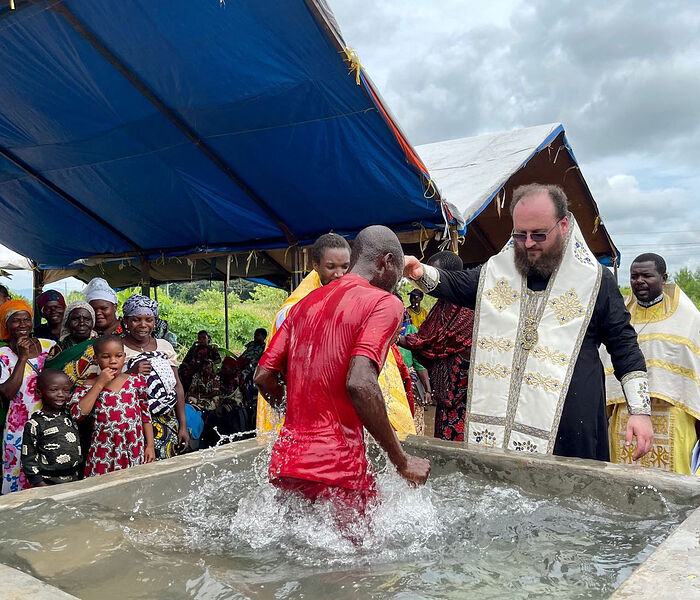
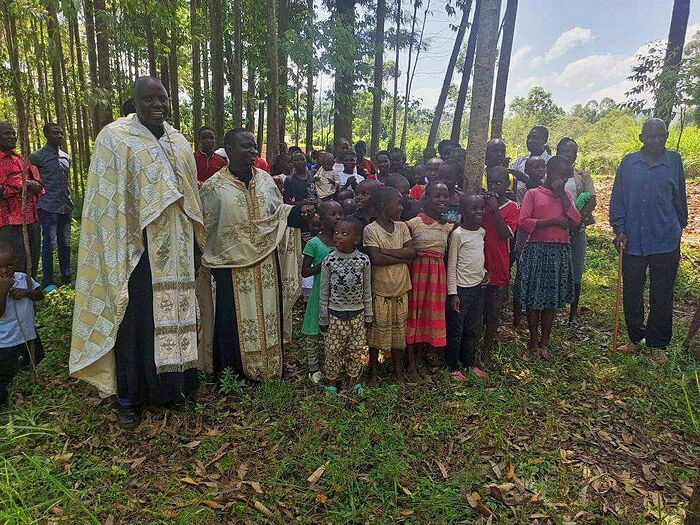
 Mass Baptism celebrated in Kenya (+VIDEO)The Sacrament was celebrated by parish rector Fr. Prodromos Kabala and Deacon Anthony Chitwa following the Divine Liturgy. In all, 18 people received Holy Baptism after a year-long catechumenate.
Mass Baptism celebrated in Kenya (+VIDEO)The Sacrament was celebrated by parish rector Fr. Prodromos Kabala and Deacon Anthony Chitwa following the Divine Liturgy. In all, 18 people received Holy Baptism after a year-long catechumenate. Mass Baptisms celebrated in Tanzania and KenyaThe newly illumined had undergone a year of catechism with Fr. Ambrose.”>in December.
Mass Baptisms celebrated in Tanzania and KenyaThe newly illumined had undergone a year of catechism with Fr. Ambrose.”>in December. 
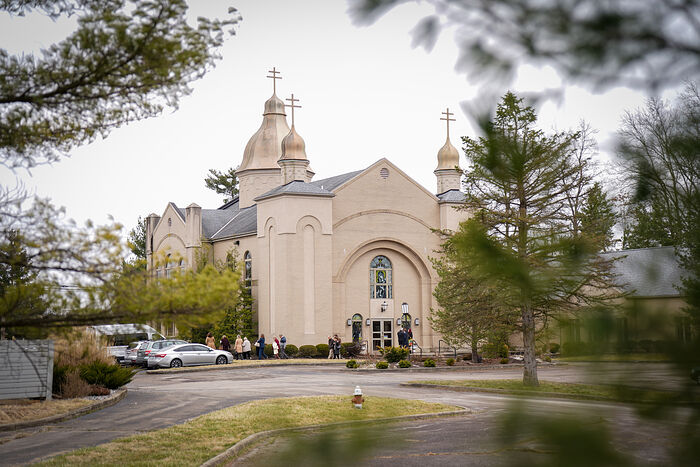
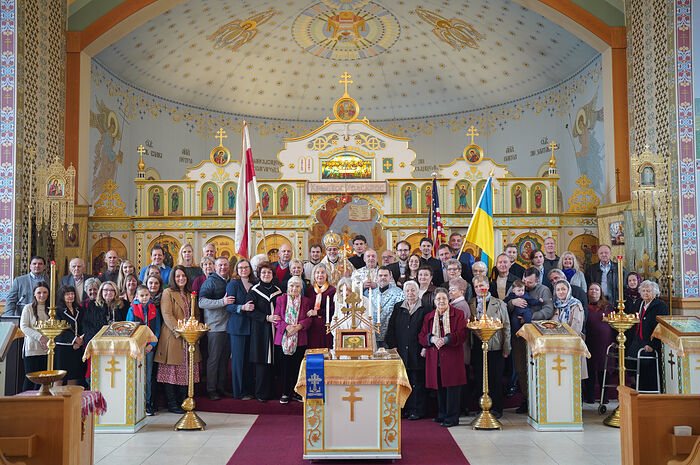
 Belarusian schismatics emboldened by Constantinople’s actions in Ukraine, hope for autocephaly tooThe granting of a tomos of autocephaly to Ukrainian schismatics, which the Ecumenical Patriarchate is preparing for, should have an impact on Belarus as well, the head of the schismatic “Belarusian Autocephalous Orthodox Church” (BAOC) believes.
Belarusian schismatics emboldened by Constantinople’s actions in Ukraine, hope for autocephaly tooThe granting of a tomos of autocephaly to Ukrainian schismatics, which the Ecumenical Patriarchate is preparing for, should have an impact on Belarus as well, the head of the schismatic “Belarusian Autocephalous Orthodox Church” (BAOC) believes.
 Greek Metropolis of Piraeus excommunicates MPs who voted for gay marriageIn response to the Greek Parliament’s scandalous decision to legalize gay marriage earlier this month, the Metropolis of Piraeus has excommunicated those MPs who voted in favor of the relevant bill.
Greek Metropolis of Piraeus excommunicates MPs who voted for gay marriageIn response to the Greek Parliament’s scandalous decision to legalize gay marriage earlier this month, the Metropolis of Piraeus has excommunicated those MPs who voted in favor of the relevant bill. Greek Metropolitan of Kythira excommunicates legislators who voted for gay marriageThe recent events in Parliament “call for rivers of tears of repentance and heartbreak… Our era is indeed worthy of tears and, without exaggeration, worthy of mourning,” His Eminence writes.”>Kythira, the Metropolis of Corfu has resolved to excommunicate local deputies who voted for gay marriage
Greek Metropolitan of Kythira excommunicates legislators who voted for gay marriageThe recent events in Parliament “call for rivers of tears of repentance and heartbreak… Our era is indeed worthy of tears and, without exaggeration, worthy of mourning,” His Eminence writes.”>Kythira, the Metropolis of Corfu has resolved to excommunicate local deputies who voted for gay marriage  Greece becomes first Orthodox country to legalize gay marriageGreek Parliament voted late last night, despite the fierce and persistent resistance from the Church and society, to legalize gay marriage and adoption by gay couples.”>last month.
Greece becomes first Orthodox country to legalize gay marriageGreek Parliament voted late last night, despite the fierce and persistent resistance from the Church and society, to legalize gay marriage and adoption by gay couples.”>last month. 